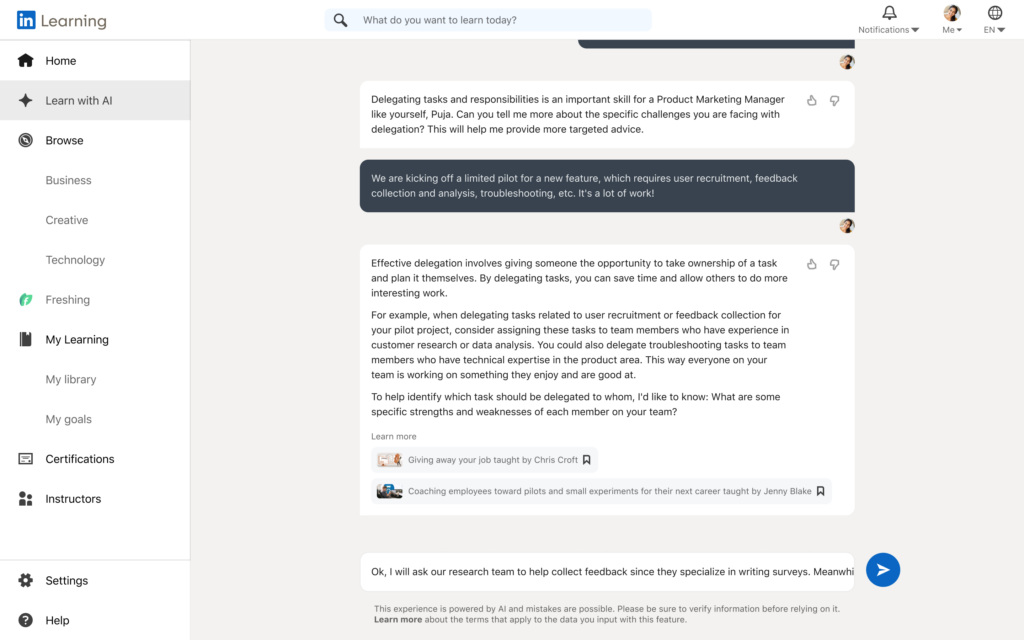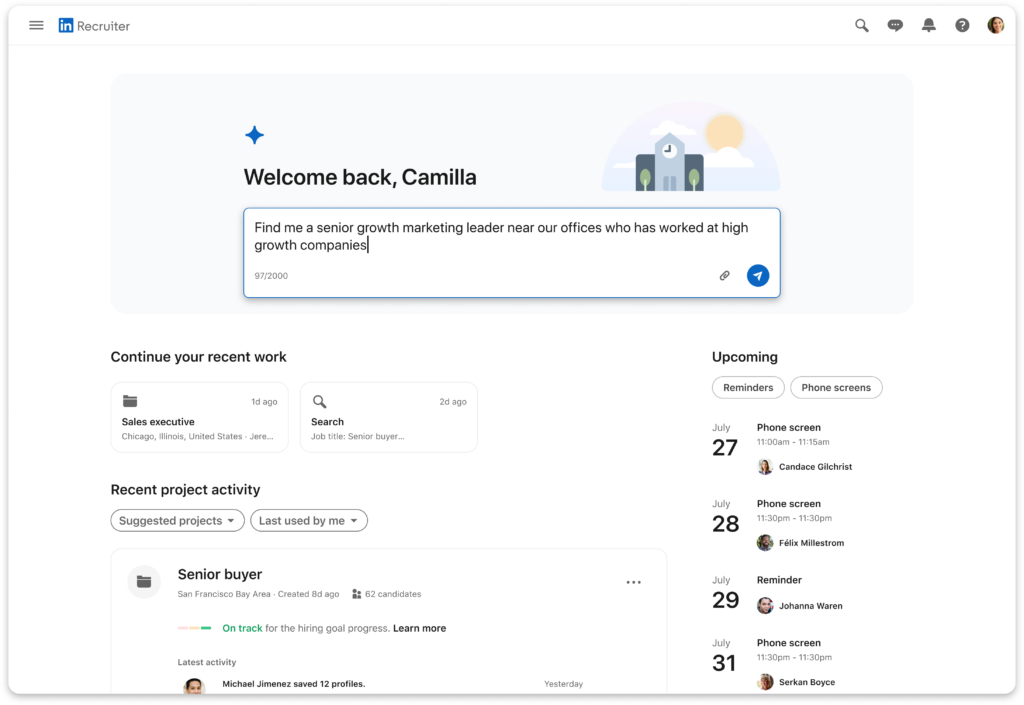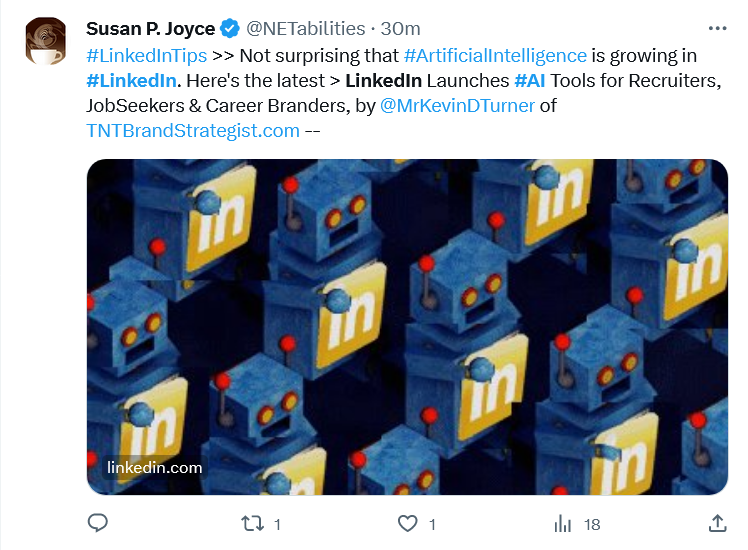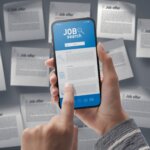
For talent acquisition leaders, finding qualified candidates fast is the top priority. (Image generated by AI)
LinkedIn: AI is simplifying employment for job seekers and recruiters
- LinkedIn is piloting new generative AI tools in Recruiter and Learning Hub.
- Recruiter pairs AI with unique insights from more than 950 million professionals, 63 million companies, and 40,000 skills.
- LinkedIn is testing out real-time advice in two of the most in-demand skills that apply across all types of jobs.
With AI being used for almost everything today, it only makes sense for recruiters to adopt the technology. Today, AI is being used to help recruiters scan through profiles and even pick ideal candidates for a role. And so far, the AI has been doing a decent job.
In fact, some recruiters are worried that AI could eventually replace them, especially with companies being able to use the tools efficiently. While this may not happen any time soon, organizations have started looking at how AI recruitment tools can give them a boost in finding suitable candidates.
In the US, there were more than 10 million job openings in the spring of 2023, according to statistics by the US Chamber of Commerce. But there are only 5.7 million unemployed workers in the US.
Not only were there more jobs in the market, but employees had an advantage when picking their jobs. They could negotiate for higher pay, better benefits, and conditions that created a more favorable work-life balance for themselves.

AI can make a difference to recruitment. (Image generated by AI)
Despite there being many job portals, most companies still prefer picking candidates from LinkedIn. After all, LinkedIn is the most extensive social media network for professionals. To help organizations in their search for the best and most appropriate talents, LinkedIn has also developed AI tools for both recruiters and jobseekers.
Tech Wire Asia spoke to Feon Ang, vice president of LinkedIn Talent Solution and managing director, APAC, to understand these new tools.
TWA: What are organizations’ most prominent challenges when sourcing talent on platforms like LinkedIn today?

Feon Ang, vice president of LinkedIn Talent Solution and managing director, APAC
Jobs and the skills required for them have been changing very quickly. For instance, job skills have evolved by 25% globally since 2015. This pace of change was higher in the APAC – 27% in Australia, 30% in India and 36% in Singapore. Today, with rapid developments in AI, skills are estimated to change by at least 65% by 2030 globally. We also know that business leaders are relying on HR and recruitment teams to lead the way to ready their workforce for the changes ahead.
So, finding qualified candidates fast is the top priority for talent acquisition leaders. But getting to that perfect candidate is time-consuming and complex — it can require hours of Boolean searches, emails, and follow-up messages.
Our new Recruiter 2024 experience – which pairs AI with unique insights from more than 950 million professionals, 63 million companies, and 40,000 skills on our platform – can help talent acquisition leaders find qualified candidates faster. For example, talent leaders can use natural language and put their hiring goal in words like “I want to hire a senior growth marketing leader.”
Our tool can infer the type of candidate the hirer is looking for and provide higher-quality candidate recommendations from a much wider pool of candidates — moving beyond the brand-name companies that have traditionally been the default.
TWA: Can you tell us more about the two new AI tools offered by LinkedIn?
To help organizations navigate the changing world of work, LinkedIn is piloting new generative AI tools in Recruiter and Learning Hub to a small handful of customers today, with plans to roll them out to all customers throughout the year:
Recruiter 2024 – LinkedIn’s new AI-assisted recruiting experience makes hiring easier so talent leaders can focus on strategic, people-centric work. Hirers can use natural language search prompts like “I want to hire a senior cloud engineer,” and LinkedIn’s AI models, paired with unique insights, can infer the type of candidate the hirer is looking for and provide higher-quality candidate recommendations from a much wider pool of candidates.
LinkedIn Learning’s AI-powered coaching – LinkedIn is testing out real-time advice in two of the most in-demand skills that apply across all types of jobs: leadership and management. Learners can ask “How can I delegate tasks and responsibilities effectively?” Instead of giving you a one-size-fits-all answer, it will ask you clarifying questions to understand your specific situation and experience better and then offer advice, examples, and feedback based on hundreds of hours of content from LinkedIn Learning’s expert instructors.

LinkedIn Learning’s AI-powered coaching (Image by LinkedIn)
TWA: Is AI-powered coaching only available in English? Would users who are more active on LinkedIn get better recommendations than those who are not very busy?
AI-powered coaching rolled out globally in English to a handful of customers within LinkedIn Learning Hub, with plans to expand to all customers by the end of the month. Our new LinkedIn Learning AI-powered coaching experience delivers real-time, highly personalized course suggestions based on a learner’s job title, career goal, and the skills they follow.
We’re also starting to test real-time advice in two of the most in-demand skills that apply across all types of jobs: Leadership and Management. Learners can ask the chatbot “How can I delegate tasks effectively?” and instantly receive summarized insights from thousands of hours of content on these topics from LinkedIn Learning instructors.
This experience also allows learners to find relevant content faster for any topic in our library. Instead of browsing through a bunch of courses, ask for what you’re looking for, and in seconds, get recommendations and course links showing you exactly where to start. Every content recommendation is highly personalized based on all the information members have shared.

LinkedIn’s new AI-assisted recruiting experience makes hiring easier. (Image by LinkedIn)
TWA: Will LinkedIn also develop tools to help detect job scams or flag fake profiles?
We work daily to keep our members safe, including our automated systems being paired with teams of experts to stop the vast majority of fake accounts before they appear in our community. Our transparency report shows that 96% of detected fake accounts and 99.1% of detected spam and scams are caught and removed by our automated defenses.

LinkedIn adding AI to more of its mix is likely to speed up hiring processes.
Apart from asking members to report suspicious profiles and content, in October 2022, we introduced verification options for LinkedIn profiles, including using a new deep-learning-based model to detect fake accounts using AI-generated profile photos.
In April 2023, we rolled out additional ways for members in the US to verify their identity and where they work. We’ve expanded this to India, Mexico, and Canada, with plans to roll it out in more markets.
READ MORE
- 3 Steps to Successfully Automate Copilot for Microsoft 365 Implementation
- Trustworthy AI – the Promise of Enterprise-Friendly Generative Machine Learning with Dell and NVIDIA
- Strategies for Democratizing GenAI
- The criticality of endpoint management in cybersecurity and operations
- Ethical AI: The renewed importance of safeguarding data and customer privacy in Generative AI applications




